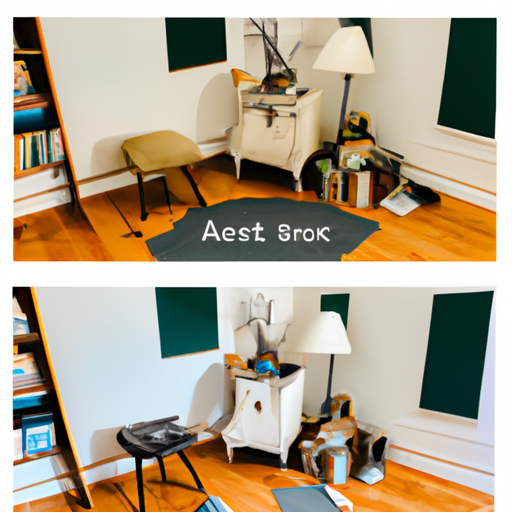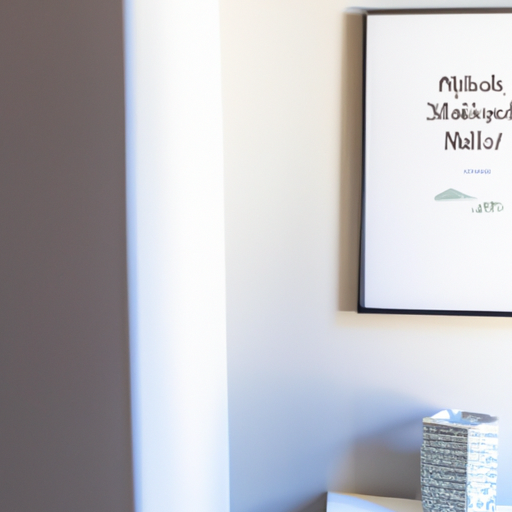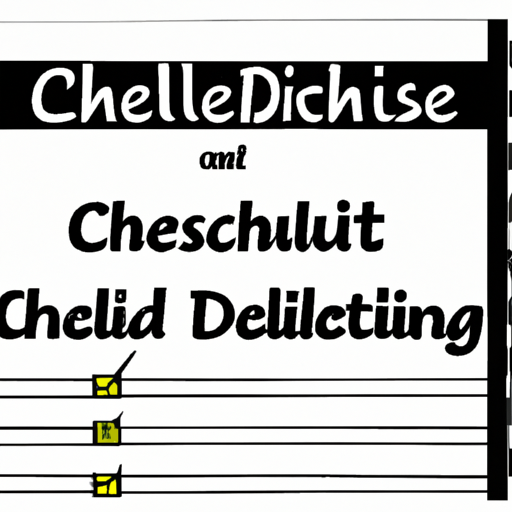Note: As an Amazon Associate I earn from qualifying purchases.
My book review ‘Minimalista: ’Your Step-by-Step Guide to a Better Home, Wardrobe, and Life’
Introduction
I recently plunged into the realm of minimalism with Shira Gill’s book, “Minimalista.” As someone enthusiastic about decluttering and optimizing spaces, the book’s promise of transformative organizing advice had caught my attention. My affinity for systematic approaches and life hacks had me curious if Gill’s guidance could further refine my minimalist journey. With a keen eye on practicality over aesthetic, I was eager to see how this book might weave into the fabric of my daily routine. So, here’s a dive into my experience with “Minimalista” and its influence on my quest for a clutter-free life.
Prices
Check prices of the Minimalista: 'Your Step-by-Step Guide to a Better Home, Wardrobe, and Life' on:
First Impressions and Book Aesthetics

Upon first seeing Shira Gill’s book, Minimalista, I was drawn to its appealing design. The solid build and matte cover exuded a sense of refinement. Eager to explore how Shira’s expertise in organizing and minimalistic living would be presented in print, I opened the pages with anticipation.
I was worried about the book being damaged during shipping due to its tactile nature. I wanted it to look perfect for a coffee table. A small scuff on the cover was an unwelcome sight, despite the book’s overall visual appeal. While shipping issues shouldn’t discourage purchases, it’s important to consider if you’re gifting the book.
Once you open the book, you’ll find clear, high-resolution images that convey sophistication and calmness. These images are strategically placed to enhance Shira’s perspectives without overwhelming the reader. As a reader who values both aesthetics and utility, I believe Minimalista achieves an optimal blend. It suits various settings, from a coffee table to a functional bookshelf, encouraging readers to explore its pages.
However, this book is more than just a decorative piece for your home. Shira designed it for regular use, as indicated by its size and weight. You won’t find extensive research links or technical articles within its pages. Instead, the book is organized into clear sections, making it accessible. Shira’s conversational tone, combined with her confident and humorous demeanor, transforms the minimalism and organization process from intimidating to inviting.
The physical book could have been improved with additional features for editing assistance, such as checklists or bookmarks. This would enhance the user experience and encourage more action from the reader instead of just contemplation.
In summary, “Minimalista” engages its topic in both content and design. It’s an appealing visual experience and a pleasurable tactile one with high quality. Despite shipping issues, the book pulls you in once received. Its captivating content and presentation make it a valuable addition to my collection, one I look forward to revisiting frequently.
Practical Application and Usefulness

When I began reading Shira Gill’s “Minimalista,” I assumed it would be a simple guide for decluttering. Instead, I discovered a thoughtful discussion about intentional living. At first, I was hesitant due to the abundance of organizing books promising life-changing outcomes. However, Gill’s “fewer, better” philosophy appealed to me.
In practical use, the book is effective. The breakdown room by room is helpful, enabling me to concentrate on a single area at a time, which seems less daunting than dealing with my entire apartment in one go. I valued the clear-cut checklists and suggested products that saved me from aimless web searches. However, I have reservations about the specified sizes mentioned for various items as not every space adheres to such standards.
The section on editing resonated with me. I’ve often held onto items ‘just in case,’ but Gill’s prompts pushed me to reassess my belongings seriously. What she presents is not new per se—I’ve encountered similar advice in other books, from Marie Kondo’s famous “does it spark joy?” to the ruthless practicality of The Home Edit—but Gill’s framing of these ideas is refreshingly realistic. On the flip side, the advice can sometimes seem too simplistic for those who have already ventured down the minimalist path and might crave more nuanced guidance.
One aspect I found missing was a thorough exploration of digital clutter. In modern times, our online existence can be equally disorganized as our physical world. Surprisingly, this issue was barely addressed, despite the growing importance of digital minimalism, backed by scholarly research and popular conversations on Hackernews.
One must consider that although the book is marketed as a coffee table accessory, I recognized the paradox of buying another item to aid in decluttering. This situation highlights the thin divide between design and functionality within minimalism. At times, the emphasis can skew towards visual appeal rather than tangible benefits.
Nevertheless, “Minimalista” stands out by helping you connect your space with your personal values, an essential yet frequently overlooked aspect in other organizing methods. Gill highlights the importance of mindset and rewarding small victories throughout the process with #15minutewins. This approach focuses on progress rather than perfection.
From the viewpoint of a tech enthusiast and someone intrigued by life hacks and productivity tips on subreddits, Shira Gill’s book doesn’t introduce revolutionary algorithms or theories. Yet it provides practical advice that, when consistently applied, can significantly impact your life, similar to how effective coding practices improve a project over time.
In conclusion, this book is a valuable resource for those beginning their intentional and simplified life journey. Despite its limitations as a one-size-fits-all solution, it offers essential guidance.
The Art of Decluttering and Organizational Tips

Diving into Shira Gill’s “Minimalista,” I found her approach to decluttering and organization appealing for my simple life goals. The book doesn’t advocate for an extreme minimalist lifestyle; instead, it emphasizes personalization. Minimalism should fit individual needs and preferences.
Not only does Gill offer solutions for managing household clutter, but she also explores the psychological aspects that can hinder the process. She encourages self-reflection on buying habits and attachment to items, topics often neglected in simpler organizing manuals. Minimalista effectively combines instructions with rationales, creating a strong foundation for intentional action.
One practical benefit of the book is its approach to decluttering in manageable tasks. This method, referred to as “divide and conquer,” is valuable for those, including myself, who feel overwhelmed by large organizational projects. The process, from organizing a single drawer to reevaluating an entire room, offers a sense of achievable progression that’s motivating.
However, amidst the praise for the book, there are some drawbacks. Some readers may find it assumes they’re able to let go of items easily, which isn’t true for everyone. Readers with deeper attachment issues might require extra help beyond what’s provided in the book.
In terms of implementation, some parts of the book propose modifications that might seem unrealistic for readers with various living conditions. Not all people can modify their space to accommodate certain organizational designs suggested in the book, making these recommendations less practical for them.
It’s also important to note that while this guidance is comprehensive, it may not cover all organizing needs. Gill’s methods can be combined with other approaches. Readers might require additional resources for specific challenges like digital clutter or time management.
In the contemporary world, I value “Minimalista” for combining functionality and aesthetics in organizing. A tidy workspace enhances mental focus and productivity, which is a common theme in tech communities on platforms like Hackernews and Reddit when they share workspace setups.
Although the book “Minimalista” doesn’t provide direct scientific links for its minimalist advice, I find value in its translation of personal experiences. The absence of academic citations is reasonable given the subjective nature of home organization.
In the spirit of minimalism, there’s virtue in Minimalista’s call for readers to refine their surroundings in a way that amplifies their values and priorities. This echoes the principles I discussed in my thoughts on ‘Goodbye, Things: The New Japanese Minimalism’. While Shira Gill’s approach may not be novel in the overcrowded space of decluttering resources, its comprehensive and human-centered approach stands out, making it a worthwhile addition to one’s personal growth library.
Incorporation of Lifestyle and Mindfulness

Incorporating minimalism into daily life goes beyond managing physical clutter. It’s a means to enhance mental clarity, according to Shira Gill’s minimalist philosophy as expressed in her book. Her methodology doesn’t involve reducing life to its essence but rather identifying and utilizing what is genuinely essential.
As I learned from Shira, mindfulness plays a big role in her approach. It means being thoughtful about what you let into your surroundings and your life. The idea of organizing not only physical spaces but also priorities and time resonated with me. Although I’ve always appreciated orderly environments, Shira encouraged me to think deeper about the reasons behind my belongings.
I’m generally wary of one-size-fits-all solutions, and thankfully, Shira avoids that trap. Instead, her process seems adaptable; it’s like an open-source tool that you can tailor to your specific lifestyle needs. She advocates for personalized minimalism, which resonates with my aversion to overly prescriptive systems. This approach reminds me of when I finished reading “Minimalism: Live a Meaningful Life” and how the authors emphasized a similar philosophy by encouraging readers to find what works best for them.
A downside is that some of Shira’s ideas overlapped with other minimalist philosophies I’ve encountered. The book felt repetitive at times, like a rehash of familiar concepts. However, her emphasis on aligning minimalism with personal values made it unique and engaging.
A tangible issue was the book’s poor condition upon arrival. Bent corners and sticky residue may seem minor, but they affected my first impression. High-quality content about aesthetics and intentional living deserves equal attention to the medium’s presentation.
Despite these challenges, I found the information useful and engaging. I valued the detailed room-by-room guides and checklists which made decluttering seem less overwhelming. The 15minutewins hashtag is an effective way to encourage small, incremental changes that can significantly impact our perspective on a task’s feasibility and help prevent burnout.
From a technological standpoint, I believe Minimalista could evolve into an interactive application. I haven’t discovered one yet, but it seems like a logical progression from the book’s lists and instructions. A GitHub repository for life management with community interaction could prove to be very enlightening.
To address potential criticism, I acknowledge that the book may not provide groundbreaking information if you’re already living a minimalist lifestyle. However, its worth lies in its clear and efficient presentation of minimalist concepts.
On a personal level, I support the use of purposeful technology and efficient work methods. Discovering these concepts applied to life and home management greatly impacted me. Shira’s idea of “less, but better” resonates with my commitment to maximizing value—regardless if it is in software or household items.
Overall, Minimalista offers a unique approach to living. It emphasizes practicality while keeping values in mind. This isn’t just about decluttering; it’s an invitation to carefully select items that have purpose.
Comparisons with Other Organizing Philosophies

In exploring minimalism and decluttering methods, I’ve come across various philosophies such as Marie Kondo’s “spark of joy” and The Minimalists’ austere guidelines. Shira Gill’s approach, explained in her book “Minimalista,” offers a flexible, personalized minimalist strategy without enforcing a rigid one-size-fits-all rule.
An aspect of Gill’s approach I find particularly refreshing is the emphasis on individual values and intentional living. Unlike the strictly aesthetic minimalism portrayed on certain social media platforms, “Minimalista” doesn’t push for bare surfaces for their own sake; rather, it encourages thoughtful contemplation of what items genuinely enhance one’s life. This idea is in line with research from the University of Kansas that suggests individualized, meaningful decluttering can improve life satisfaction.1(https://psych.ku.edu/)
However, readers who follow the KonMari method closely might find Gill’s approach different. Instead of decluttering by category like Kondo suggests, Gill focuses on rooms. This distinction matters. It means that the excitement of clearing out an entire closet at once is replaced with a more divided process in “Minimalista.” This could be challenging for those who enjoy the instant gratification from Kondo’s extensive category sweeps.
On the flip side, Gill’s method could be less overwhelming for some, providing quick wins that keep motivation high—aligning with behavioral psychology principles that suggest small successes can boost adherence to larger projects.2(https://www.apa.org/topics/behavioral-psychology)
In Gill’s work, there is a noticeable absence of the subject matter on digital decluttering, which I find to be of substantial importance given that many of us regularly engage with cloud storage and file systems. The lack of this topic can leave one feeling equally overwhelmed by digital clutter as they would with physical clutter. To help bridge this gap in knowledge, I strongly recommend taking actionable steps such as reading “Digital Minimalism” by Cal Newport. This work provides not only practical solutions but also a deeper exploration of the topic.
Still, “Minimalista” offers an advantage over other organizing philosophies by focusing on both lifestyle and aesthetic aspects. It goes beyond just decluttering as a physical task, incorporating mindfulness and self-awareness.
The book proposes a realignment of purchasing habits and mentions various brands, which could be off-putting for those weary of consumerism. Author Gill advocates for a practical realignment, seeking to adjust buying patterns rather than abolishing them entirely.
One criticism I’ve noticed in conversations among Hackernews and Reddit users is the absence of discussions on advanced organizing techniques. These methods may seem too basic for individuals deeply engaged in life hacks and efficiency. However, those new to this lifestyle or looking to improve their already organized one will find value in “Minimalista.”
In sum, Shira Gill’s “Minimalista” approach combines various organizational ideas, appealing to a broad audience. It finds its unique place by not being overly restrictive or permissive, focusing on transforming personal spaces into representations of homeowners’ goals, while staying grounded in daily life realities.
Final Thoughts and Impact on My Daily Life

After digesting the content and approach of Shira Gill’s “Minimalista,” I’ve been greatly influenced by its ideology and techniques in my daily life. The book effectively combines its visual appeal as a coffee-table pick with valuable, actionable advice.
The practicality of the book is one of its strongest suits, with step-by-step guidance that doesn’t overwhelm but rather invites action. Shira enables a personalized interpretation of minimalism, which is refreshing given the often rigid narratives surrounding the concept. Implementing her strategies, notably the “#15minutewins,” has cultivated a newfound efficiency in how I tackle my domestic clutter. This quick-hit mentality is sensible and marries well with my often chaotic schedule.
More importantly, Shira highlights the significance of mindfulness beyond visual appeal. It goes beyond organizing space; it’s about organizing life. The recurring theme in her book strikes a chord with me: items should align with personal beliefs and aspirations. The prompts in her book encouraged introspective reflections on my buying habits, guiding me towards more thoughtful purchases and organization.
While the book’s tone is inviting, the assumption that change can be effortless or swift might disappoint some readers. Real transformations take effort, time, and occasional self-reflection beyond what a guide can offer. Additionally, even though the high-quality images are motivating, they occasionally portray an unrealistic standard that not every household or way of life can achieve due to financial limitations.
Incorporating the book’s suggestions into my life brought both achievements and difficulties. The room-by-room approach worked well for smaller spaces like bathrooms and closets, but was more intimidating when dealing with shared or larger areas such as living rooms. Seeing the bent corner on my copy of the book was disheartening, a reminder that not all things are within our control, much like the unpredictability of life beyond an organized home.
As much as Minimalista conveys its main idea, it lacks detail about the specific issues that may arise during the organizing process. More detailed advice or complex examples would enhance some parts, taking into account different home sizes and family situations. Nevertheless, Minimalista’s usefulness as a guide for decluttering remains largely unchanged.
In sum, Shira Gill’s book has significantly improved my daily life by providing a balance of aesthetics and functionality. It serves as both a guide and inspiration for creating a more thoughtfully arranged living space. Some people might view the book’s focus as limited or impractical. However, I believe that overcoming such limitations and applying the suggestions to one’s personal circumstances is essential for gaining the most benefit.